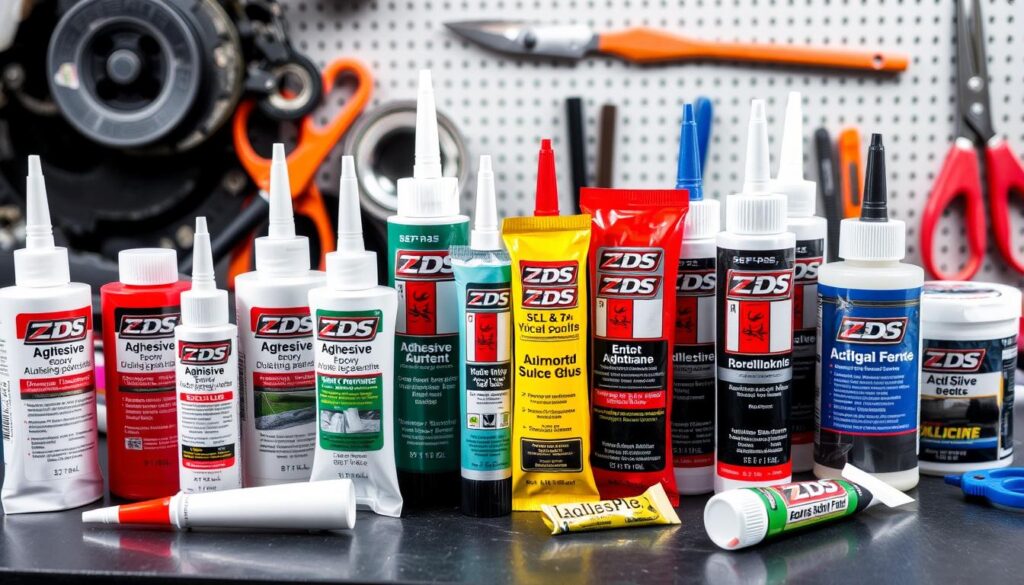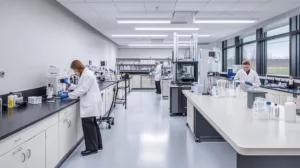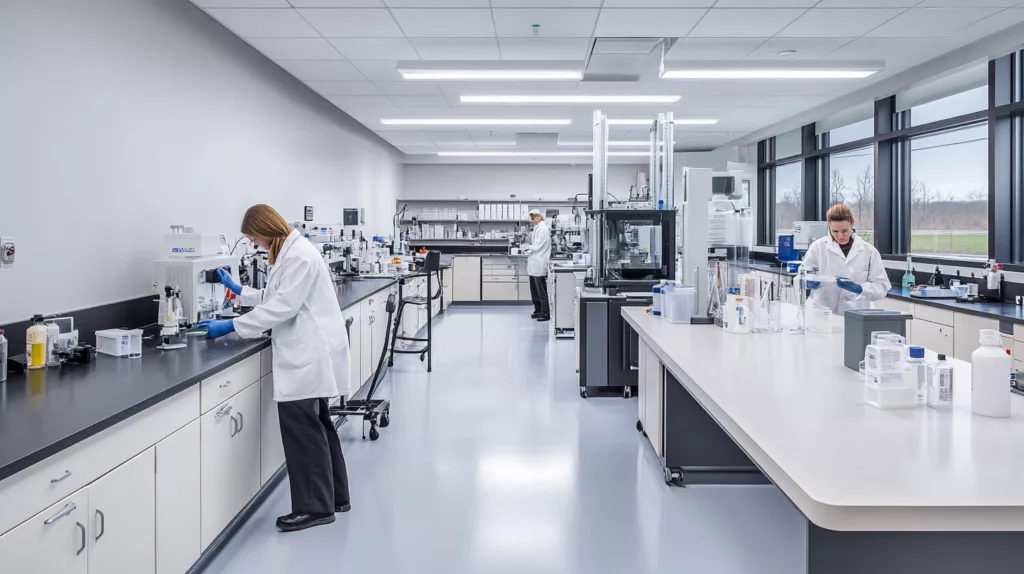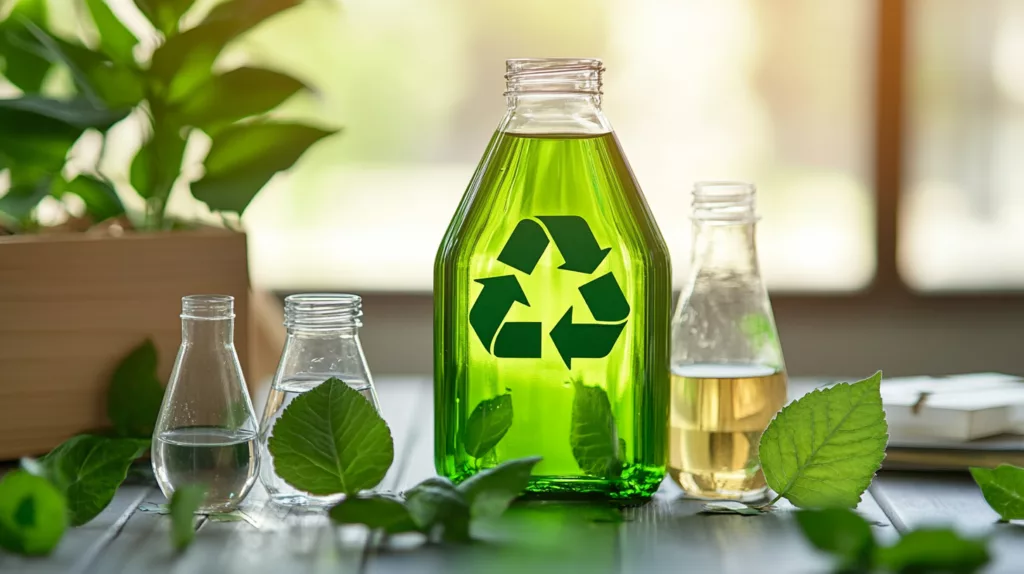How to choose the right adhesive for car repair repairs. It helps keep your vehicle safe and lasting longer. This guide will cover what you need to consider, such as the weather, what the car is made of, and how well the adhesive works. Knowing how to pick the right glue means you can avoid problems and get a strong fix. Let’s dive into the different kinds of adhesives available for car repair. This will help you make the best choice for your car needs.
Key Takeaways
- Choosing the right adhesive is crucial for vehicle longevity and safety.
- Material compatibility and environmental conditions are key factors.
- Using the wrong adhesive can lead to common issues and failures.
- Various types of adhesives, like epoxy, polyurethane, and acrylic, have different applications.
- Consulting manufacturer guidelines can help select the best adhesive for car repairs.
Understanding the Importance of Choosing the Right Adhesive for Car Repair
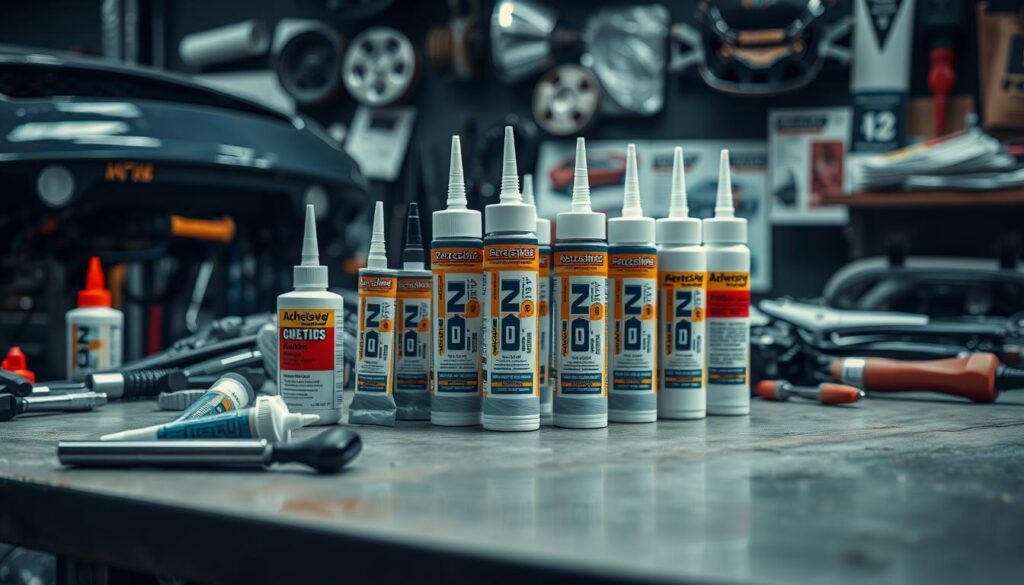
Choosing the right adhesive is crucial for car repairs. It affects not just how the repair looks but also safety and the car’s performance over time. The right adhesive creates a strong bond. This prevents dangers and strengthens the car.
Why Adhesive Selection Matters
Adhesives keep repaired parts strong and in place. Picking the wrong one can cause many problems, like weak bonds and corrosion. These issues can risk both the car’s function and passenger safety. The right automotive adhesive offers durable bonds. It stands up to car conditions.
Common Issues with Incorrect Adhesive Use
Choosing the wrong adhesive can lead to big problems. These range from small issues to big failures. Common issues include:
- Bond Weakening: Unsuitable adhesives mean bonds fail, causing parts to loosen or come off.
- Corrosion and Degradation: Wrong adhesives can react with car parts, leading to rust and weakening.
- Extended Repair Times: Using the incorrect adhesive often means more repairs, wasting time and money.
Making adhesive choice a priority helps car professionals ensure their repairs last. It keeps the cars safe.
Types of Adhesives Used in Car Repairs
Choosing the right adhesive is crucial in car repairs. It ensures the repair lasts long and works well. Different repairs need different adhesives based on materials and conditions.
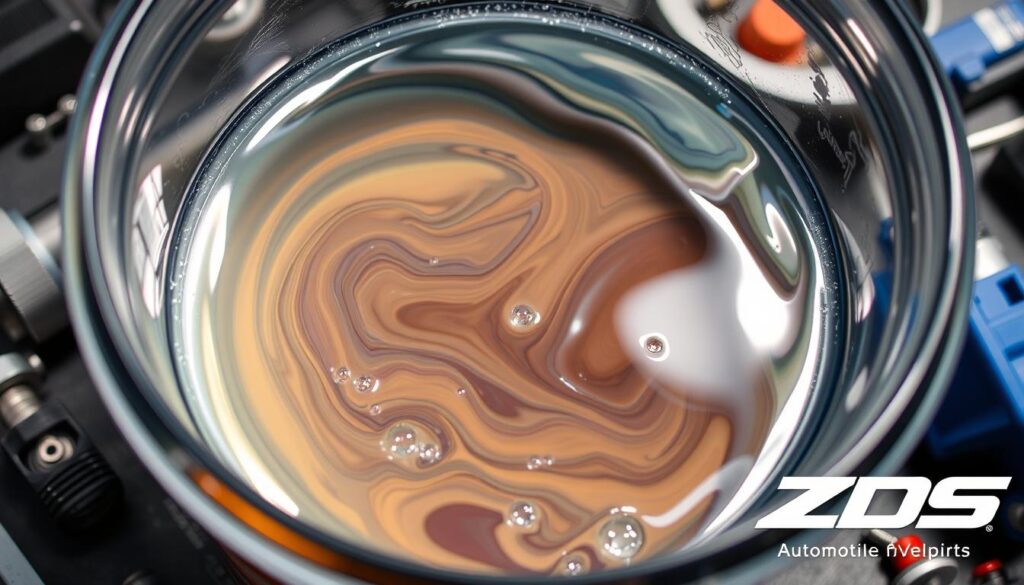
Epoxy Adhesives
Epoxy adhesives are a top choice for car repairs. They’re known for their strong bond and durability. Made of epoxy resin, they resist moisture and heat well.
They’re perfect for fixing structural issues and joining metal parts.
Polyurethane Adhesives
For a flexible and strong bond, polyurethane adhesives are ideal. They handle vibration and movement in cars well. These adhesives work on many surfaces like plastics, metals, and composites.
Acrylic Adhesives
Acrylic adhesives set quickly and resist UV light and weathering. They’re great for fast, strong bonding needs. Use them for attaching exterior parts, like trim and emblems.
Acrylic adhesives adjust well to various conditions, making them useful in car repairs.
How to Choose the Right Adhesive for Car Repair
Choosing the right adhesive for car maintenance involves key factors. These ensure a repair is reliable and lasts long. They include material compatibility, environmental factors, and adhesive strength and durability.
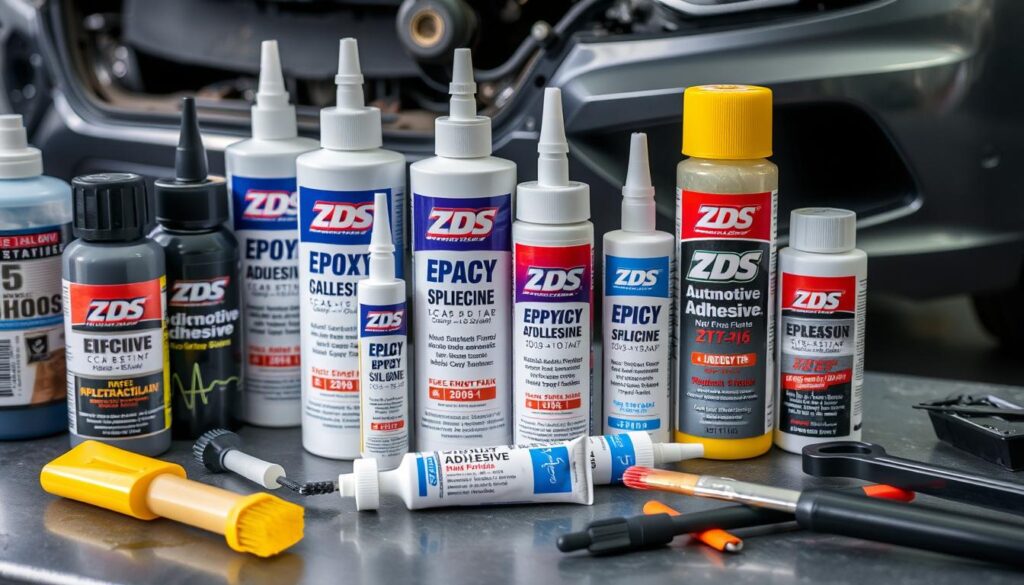
Material Compatibility
It’s crucial to match the adhesive with the materials in the car. Cars are made from different materials like metal, glass, and plastic. Each needs a specific type of adhesive. The right choice prevents corrosion and weak bonds, which could lead to failures in the repair.
Environmental Conditions
Environmental resistance is key for a repair’s longevity. Temperature changes, moisture, and UV rays can affect adhesive performance. Choosing adhesives that can handle these conditions means repairs will hold up, no matter the weather.
Strength and Durability
The adhesive’s bond strength and durability are crucial. It must withstand the car’s mechanical stresses and dynamic forces. High-strength adhesives are best for repairs that are meant to last.
By keeping these tips in mind, your car’s repairs will be strong and withstand the toughest environments.
Top Adhesive Brands for Automotive Applications
Picking the best adhesive for automotive applications is key for long-lasting car repairs and safety. There are brands known for their outstanding quality and trustworthiness. Let’s look at some highly recommended automotive adhesive brands:
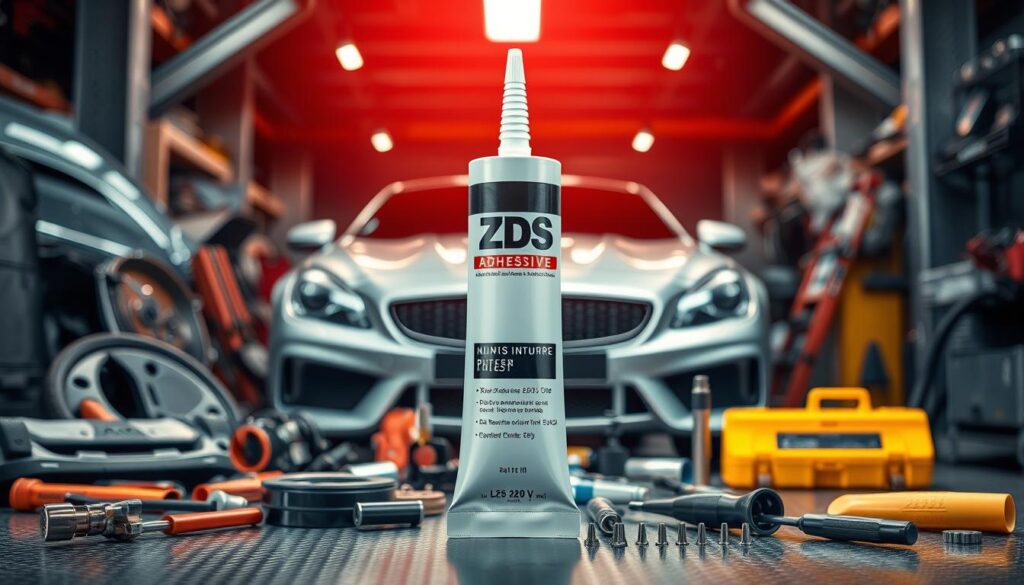
- 3M: With a wide selection of adhesives, 3M offers products known for strong bonds and flexibility. They have urethane for windshield work and double-sided tapes for trim.
- Loctite: Loctite is a respected name in the auto world, providing epoxies and acrylics. These adhesives are strong and last a long time.
- Permatex: Permatex makes adhesives for both professional and home use. Their products are perfect for sealing gaskets, locking threads, and other repairs. They work well in tough conditions.
- Gorilla Glue: Famous for all-purpose adhesives, Gorilla Glue has options for cars too. Their automotive glues are strong and resist high temperatures, ideal for various repairs.
These brands are at the top for creating the best adhesive for automotive applications. They have diverse products that meet different repair needs. By choosing from these automotive adhesive brand recommendations, you ensure quality and reliability in your repairs.
Special Applications: When to Use Specialty Adhesives
In automotive repair, we often need special adhesives. These aren’t your everyday types. They make sure cars are safe and hold up well. Here, we’ll talk about when these special glues are important.
High-Temperature Environments
Think about places in a car that get really hot, like under the hood. Here, you must use a high-temperature adhesive. It stays strong even when it gets super hot. Such adhesives are perfect for parts like the exhaust system.
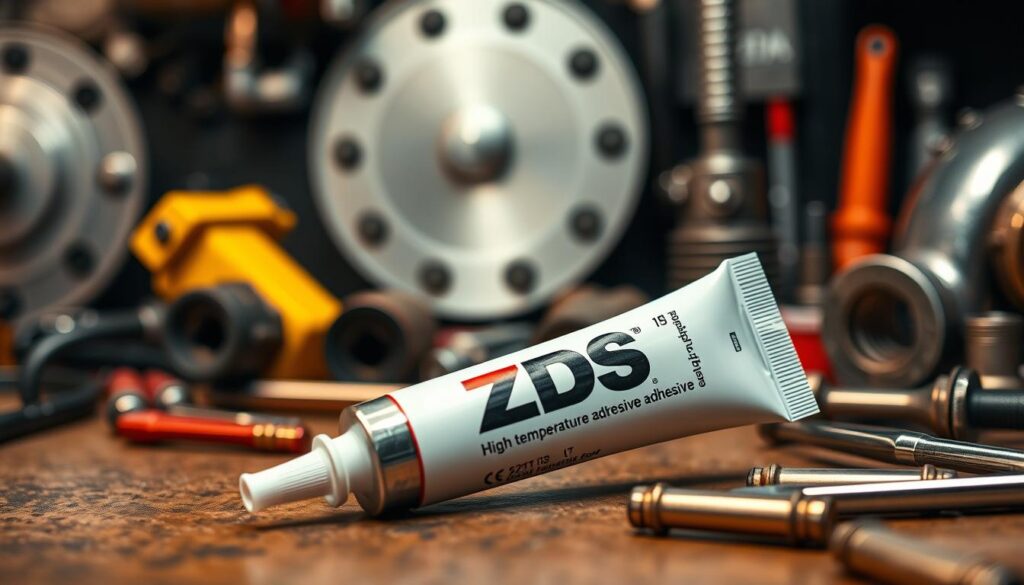
Plastic and Composite Repairs
Fixing plastic and composite parts in cars needs a special kind of glue. Regular glue just won’t do. This special adhesive sticks to plastics and composites really well. It’s great for fixing bumpers and attaching body panels.
Glass Bonding
When it comes to attaching glass, like windshields, you need a special glue. This special automotive glass adhesive keeps glass in place, safe from vibrations and shocks. It’s vital for the car’s looks and for keeping people safe. This glue is made just for car glass.
How to Apply Adhesives Correctly for Effective Car Repairs
Using the right way to apply adhesives is important for good car repairs. We’ll explain the steps simply so you get strong, lasting results.
- Surface Preparation: Getting the surface ready is crucial. Clean it well to remove any grease, dirt, or old glue. Use the right cleaners for your materials.
- Adhesive Selection: Choosing the right adhesive matters a lot. Look at guidelines for the best one for metal, plastic, or composite materials.
- Mixing Adhesives: If you need to mix your adhesive, follow the instructions closely. Getting the right mix and ratio is key for a strong bond.
- Application Technique: Spread the adhesive evenly. Use brushes, rollers, or guns for a consistent layer. The right technique avoids weak spots and air bubbles.
- Clamping: Use clamps or weights to apply pressure, as recommended. This ensures the bond stays tight while the adhesive sets. Make sure pressure is even across the joint.
- Curing Time: Give the adhesive enough time to fully set. This might take a few hours or days, depending on the product and conditions. It’s critical to wait for the full cure time.
By following these guidelines, you will create strong bonds that improve your car’s strength. Knowing how to apply adhesives correctly is key to quality auto repairs.
Tips for Choosing the Right Adhesive for Car Repair
Finding the perfect adhesive for car repairs can be tricky. Here are key tips to help choose the right one for your car.
Consulting Manufacturer Guidelines
Always look at the manufacturer’s advice when picking an adhesive. They share which ones work best depending on your car’s materials.
Researching Product Reviews and Recommendations
Before you decide, check out reviews and recommendations. What others say can help you learn about the adhesive’s quality and ease of use.
Testing Adhesives in Small Areas First
It’s smart to test the adhesive on a small spot first. This way, you can make sure it works well with your car without causing damage.
Common Mistakes to Avoid When Selecting Adhesives
Choosing the right adhesive for car repairs is more than just picking a famous brand. You must consider critical factors that determine whether your repair succeeds or fails.
Overlooking Surface Preparation
A big mistake is skipping proper surface preparation for adhesive. Any dirt, dust, or oil can weaken the adhesive’s bond. This can cause the repair to fail too soon.
- Clean surfaces thoroughly before application.
- Use appropriate solvents to remove contaminants.
- Ensure the surfaces are dry and free from moisture.
Not preparing the surface well leads to weak bonds and reduced durability. This is true no matter how good the adhesive is.
Ignoring Cure Times
Not paying attention to adhesive curing times is another mistake. Each adhesive has its own time needed to fully bond.
Adhesive makers give guidelines for curing times that you must follow closely. Hurrying this step can result in poor adhesion and repair failure.
- Consult the product’s technical data sheet.
- Allocate sufficient time for the adhesive to cure fully.
- Avoid applying stress or load to the bonded joint prematurely.
Following the right curing times and preparing surfaces correctly makes your repair strong and lasting. It saves from extra work and keeps the vehicle safe.
Support from Trusted Suppliers: ZDS™ Products
Choosing the right adhesive is key for car repairs. It must be durable and safe. ZDS™ is a highly trusted name in this field, known for its quality adhesive supplies.
ZDS™ adhesives are top-notch and innovative. They’re made for the tough needs of cars, providing strong and reliable bonds. Whether it’s joining metal to plastic or securing parts tightly, ZDS™ offers solutions for all car repair needs.
Let’s look at some ZDS™ adhesives and what they offer:
| Product | Application | Key Features |
|---|---|---|
| ZDS™ Epoxy Adhesive | Metal and hard plastic bonding | High strength, heat resistance |
| ZDS™ Polyurethane Adhesive | Flexible materials and composites | Flexibility, durability |
| ZDS™ Acrylic Adhesive | General-purpose bonding | Quick curing, strong bond |
Working with ZDS™ means your car repairs will last. The brand is all about quality and new ideas. This has made ZDS™ adhesives a go-to for car experts.
Adhesive Maintenance Tips for Longevity
Adhesive maintenance for cars is key for their longevity and effectiveness. It is vital to keep your vehicle’s adhesive bonds in great shape. Here, we share important tips for keeping car repair adhesives in good condition.
Regular Inspections
Regular checks are crucial for adhesive upkeep in cars. Make checking adhesive bonds a routine. Look for signs of wear, damage, or weakening.
Spotting these issues early can stop bigger problems and help adhesives last longer.
Re-applying Adhesives When Needed
Timely re-application is also vital for adhesive maintenance. When adhesives begin to fail, re-apply them quickly. This keeps the bonds strong and helps car repair adhesives last longer.
Future Trends in Automotive Adhesives
The automotive world is always changing. Right now, one of the big changes is in how cars stick together. That’s thanks to new kinds of glue, or adhesives. These new glues are making cars better and helping the planet too.
Companies are making these glues from stuff that grows, like plants. This is great because it’s better for the Earth. These new glues help make fixing cars less harmful to the environment. They also make repairs last longer because they’re really strong.
Robots are starting to do more of the glue work. This means every dab of glue is just right. Robots help make car repairs quicker and less likely to have mistakes. This is part of a bigger change towards using robots more in making things.
What’s happening with car glues is pretty exciting. It’s all about using less from the Earth, making repairs last, and having robots help. As we keep inventing new glues, we’re making cars in a way that’s better for the planet and for us.
| Key Trends | Impact |
|---|---|
| Sustainable Materials | Reduces carbon footprint |
| Advanced Bonding Technology | Enhances strength and durability |
| Automation | Increases efficiency and precision |
Conclusion
We’ve created a detailed guide to help you choose the right automotive adhesive for car repairs. It covers choosing the best type of adhesive. This includes looking at the materials you’re using, the environment, and what the adhesive is for. The aim is to help you know more so you can make smart choices. This ensures your car fixes are safe and last a long time.
Choosing the right adhesive is not only about how well it works. It’s also key for reliability and safety over time. We’ve talked about different adhesives, like epoxies, polyurethanes, and acrylics. These can meet your repair needs in specific ways. Things such as adhesive strength, how long they take to set, and how they hold up in different environments are vital. This guide highlights these important points to remember.
Always look for advice from trusted sources. This includes manufacturer guidelines and tips from well-known suppliers, such as ZDS™. How you apply the adhesive and care for it is important too. This helps your adhesive last longer. With this guide, you’re ready to pick adhesives wisely. This will make your vehicle repairs safer and more effective.
FAQ
Why is adhesive selection important for car repairs?
Choosing the right adhesive is key for car repairs. It keeps the car strong and lasting long. The right glue makes sure the repair is successful, safe, and won’t fail.
What are common issues with using the wrong adhesive for car repairs?
Using the wrong adhesive can cause problems. Bonds might weaken, parts could corrode, and safety risks could rise. This could mean repairs don’t last and cars don’t perform well.
What types of adhesives are commonly used in car repairs?
For car repairs, different glues are used. Epoxy adhesives are chosen for their strong, lasting bonds. Polyurethane adhesives add flexibility and acrylics set fast and resist UV light.
How do I choose the right adhesive based on material compatibility?
Think about what materials you’re fixing, like metal or glass. Pick a glue made for those materials for a strong bond.
What environmental conditions should I consider when selecting an adhesive?
Consider the environment where the repair will face. This includes extreme temperatures, moisture, and UV light. Choose glues that can handle these conditions well.
Which adhesive brands are recommended for automotive applications?
Brands like 3M, Loctite, and Permatex are top choices for car repairs. They’re known for being reliable, strong, and long-lasting.
When should I use specialty adhesives in car repairs?
Use specialty glues for certain jobs. This includes high-heat areas, fixing plastics and composites, or bonding glass. Each job needs a specific type of adhesive.
How can I ensure a strong bond when applying adhesives?
To make sure you get a strong bond, prepare surfaces well, mix the adhesive correctly, and use clamps. These steps are crucial for a good bond.
What tips can help me choose the right adhesive for car repair?
Read the manufacturer’s advice and look up product reviews. Try the adhesive on a small area first. These steps help you pick the right glue.
What common mistakes should I avoid when selecting adhesives?
Don’t skip getting surfaces ready or waiting for the glue to cure. Missing these steps can cause the repair to fail.
How can I maintain adhesive applications for longevity?
Checking the bond regularly and doing touch-ups when needed helps the adhesive last longer.
What are some future trends in automotive adhesives?
The future of car glues looks at eco-friendly materials, better bonding technology, and more automated applications.


